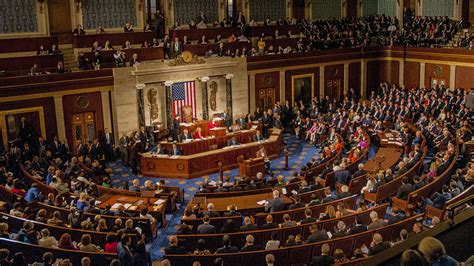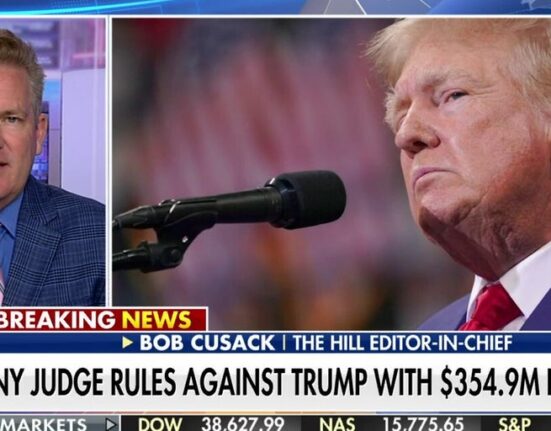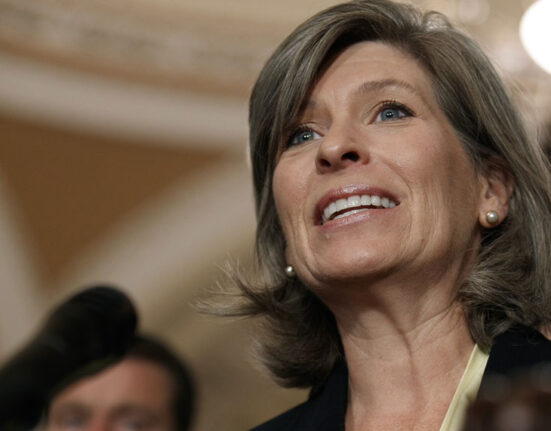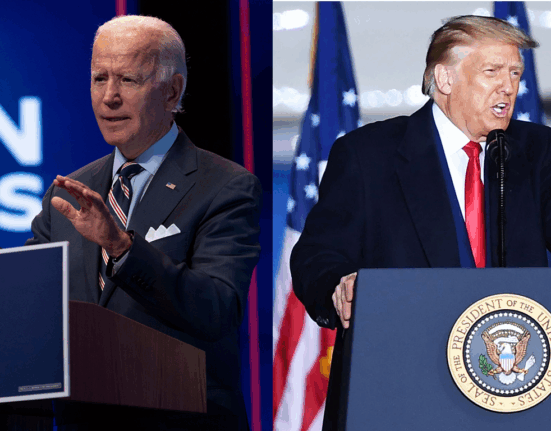[IMPORTANT: Make this 4 times longer with much more detail]
Argument An expert’s point of view on a current event. Trump’s Not a Renegade—He’s a Loyal Republican Fighter Just look at the president’s embrace of fossil fuels. By Julian E. Zelizer , a professor of history and public affairs at Princeton University. Donald Trump tips a white hard hat from his head as he stands behind a microphone on a well-lit stage with a crowd out of focus behind him in the darkness. Then-Republican presidential candidate Donald Trump wears a coal miner’s protective hat while addressing supporters during a rally in Charleston, West Virginia, on May 5, 2016. Ricky Carioti/The Washington Post via Getty Images FP Live: How are Trump’s first moves playing out globally? FP Live brings together three seasoned observers to discuss: Ed Luce, Kishore Mahbubani, and Nathalie Tocci. Register now to join. February 3, 2025, 6:00 AM Comment icon View Comments ( 3 ) Although much of the commentary about U.S. President Donald Trump continues to revolve around the ways that he upends traditional Republican Party politics, much of his success, in fact, stems from the opposite—the ways in which he champions policies that have been at the core of the GOP for decades. Trump’s Second Term Ongoing reports and analysis It was not a surprise that Trump’s inaugural address included the words “drill, baby, drill,” a catchphrase that gained popularity with vice presidential nominee Sarah Palin in her 2008 campaign for vice president, eight years before Trump first ran. And when Palin injected the phrase into the popular bloodstream, it already reflected decades of Republicans shifting from environmental concerns and promoting higher rates of fossil fuel production. Although much of the commentary about U.S. President Donald Trump continues to revolve around the ways that he upends traditional Republican Party politics, much of his success, in fact, stems from the opposite—the ways in which he champions policies that have been at the core of the GOP for decades. Trending Articles Trump’s Tariff Tango Eleventh-hour deals postpone U.S. tariffs on Mexico and Canada for one month, but the White House’s trade threat to… Powered By Advertisement Trump’s Tariff Tango X Trump’s Second Term Ongoing reports and analysis It was not a surprise that Trump’s inaugural address included the words “drill, baby, drill,” a catchphrase that gained popularity with vice presidential nominee Sarah Palin in her 2008 campaign for vice president, eight years before Trump first ran. And when Palin injected the phrase into the popular bloodstream, it already reflected decades of Republicans shifting from environmental concerns and promoting higher rates of fossil fuel production. Every time that Trump utters the phrase, he reminds Republicans that regardless of his behavior, much of what he is fighting for is exactly what they have desired since the 1970s. He is the party’s path to political power and achieving key policies, as he demonstrated with passage of a massive supply-side tax cut in 2017 . Trump is the battering ram that Republicans have been looking for in their efforts to weaken or dismantle the regulations that environmentalists have struggled to put into place over the decades. Whenever the president says “drill, baby, drill,” he offers a not-so-subtle reminder to Republicans that yes—he is, in fact, one of them. There was a time when Republicans were not unilaterally opposed to environmentalism. Between 1964 and 1976 were what writers Gregg Coodley and David Sarasohn called “the Green Years,” when most of the movement’s major federal policy initiatives, including the Clean Air Act and the creation of the Environmental Protection Agency, were created with bipartisan support. Numerous Republicans—such as President Richard Nixon—grudgingly went along with legislation to protect the environment. Or—as was the case with Tennessee Sen. Howard Baker and Pennsylvania Rep. John Saylor—they even enthusiastically championed this particular expansion of federal power. Since Nixon’s presidency, though, many leading Republicans have attempted to push back against efforts to curtail the United States’ thirst for oil. With the environmental movement gaining strength in the 1970s, as historian Meg Jacobs argues in her book Panic at the Pump , prominent Republicans within President Gerald Ford’s administration worked within the executive branch to undercut attempts to redirect national policy toward conservation. President Ronald Reagan likewise cast doubt over efforts to deal with issues such as acid rain, and he deployed executive muscle to roll back regulations that did make it onto the books. He appointed cabinet secretaries such as James Watt at the Department of Interior and Anne Gorsuch at the Environmental Protection Agency (EPA)—people who had no interest in implementing the policies that were under their jurisdiction. “It was eight lost years—years of lost time that cannot be made up and where a lot of damage was done that may not be reparable,” lamented the then-president of the Wilderness Society, George Frampton Jr., in 1989. As environmentalism gained strength within the Democratic Party, Republicans doubled down on the fight. Within Congress, a new generation of Republicans that entered into Capitol Hill in the 1980s and 1990s likewise shifted to the right on environmental regulation. The “Contract With America,” a 1994 policy proposal in which Georgia Rep. Newt Gingrich and his allies developed as a platform to nationalize the midterms, did not mention the environment and called for policies that would handcuff regulatory bodies. Read More High voltage power lines run along the electrical grid in Pembroke Pines, Florida on May 16, 2024. The Key to a Successful Trump Energy Agenda Is Electricity Rather than drill, baby, drill, it should be build, baby, build. Argument | Jason Bordoff , David R. Hill An oil tanker is seen across the harbor where it’s anchored, a big hulking mass of black and white metal against gray waters and a hazy gray sky overhead. How Trump Could Put Tighter Screws on Moscow U.S. and European sanctions are already unprecedented, but there is plenty the new administration can still do to squeeze Russia’s earnings. Analysis | Keith Johnson Ronald Reagan smiles and lifts his clasped hands together. Nancy Reagan in a blue dress and hat with golden accessories looks to the right smiling. A U.S. flag and two other men are seen behind them. A President’s Second Inaugural Address Is About More Than Vindication Ronald Reagan’s 1985 speech entrenched a new approach to governing. Analysis | Julian E. Zelizer Gingrich, who often could express broader concern for the health of the environment, blasted the EPA as the “biggest job-killing agency in inner-city America” in a speech in 1995, just one month into his term as speaker of the House. In his mind, the EPA was a “highly centralized command bureaucracy artificially trying to impose its judgment with almost no knowledge of local conditions and with a static rather than dynamic view of itself.” He called the 1980 Superfund law, aimed at cleaning up toxic waste sites, a “national disgrace.” One of President George W. Bush’s first acts in 2001 was to remove the United States from the Kyoto Protocol, an international agreement from 1997 aimed at reducing greenhouse emissions. The administration repeatedly cast doubt on scientific reports indicating a consensus about the problem of rising global temperatures. Sign up for Editors’ Picks A curated selection of FP’s must-read stories. Sign Up By submitting your email, you agree to the Privacy Policy and Terms of Use and to receive email correspondence from us. You may opt out at any time. Enter your email Sign Up ✓ Signed Up You’re on the list! More ways to stay updated on global news: FP Live Enter your email Sign Up ✓ Signed Up World Brief Enter your email Sign Up ✓ Signed Up China Brief Enter your email Sign Up ✓ Signed Up South Asia Brief Enter your email Sign Up ✓ Signed Up Situation Report Enter your email Sign Up ✓ Signed Up View All Newsletters Bush also established the Energy Task Force, headed by Vice President Dick Cheney, which worked with executives from the oil industry to issue a report that acknowledged the need for efficiency and conservation but simultaneously proposed strengthening the existing infrastructure for oil production and increasing fossil fuel production until alternative energy sources were more realistic. The report also called for expanding the sources of foreign oil to achieve stability at home. Though, to his frustration, Bush and the GOP failed to open up drilling in the Alaska Arctic Wildlife Refuge, he rolled back many environmental regulations. In other areas, the story was the same. According to the Natural Resources Defense Council, the president reversed regulations on mining metals, blocked rules to reduce the discharge of raw sewage into water, and more . Under Bush, the Office of Management and Budget gained significant power to dismantle or avoid implementing existing rules. The phrase “drill, baby, drill,” which boiled the entire shift of the ideological outlook of Republicans down to the essence, is credited to Michael Steele, who served as the lieutenant governor of Maryland and the chairman of the 2008 Republican National Convention (and is currently a prominent anti-Trump host on MSNBC), in response to gas having reached $4 a gallon. “So, do you want to put your country first? Then let’s reduce our dependency on foreign sources of oil and promote oil and gas production at home,” Steele told the delegates gathered in St. Paul, Minneapolis, at the 2008 convention. “In other words: Drill, baby, drill! And drill now!” The crowed instantly burst out repeating what Steele, who later expressed regret for his statement, had said. Steele was the inventor, but it was 2008 vice presidential nominee and Alaska Gov. Palin who gave it juice. After the late Sen. John McCain selected Palin as his running mate, the governor quickly proved that she knew how to rile up a crowd. From her acceptance speech through her fall rallies, Palin had a number of breakthrough talking points, including railing against the “ lamestream media ” and boasting of being “your average hockey mom.” There were also all kinds of slights and insinuations against the Democratic candidate, then-Sen. Barack Obama, whom Palin made a point of emphasizing his middle name, “Hussein.” But one of the lines that did best was when she turned to the subject of oil. “Drill, baby, drill!” she liked to say from the podium while the audience repeated her words as if they were joining in during the “shoot interviews” that professional wrestlers conduct from the squared circle. During her debate with then-Sen. Joe Biden on Oct. 2, 2008, Palin stood firm as her opponent lit into McCain’s record on solar and wind energy. It was almost as if she had been waiting for Biden to criticize her by saying, “the only answer is drill, drill, drill.” Palin’s face lit up as she corrected him: “The chant is ‘drill, baby, drill.’ And that’s what we hear all across this country.” Writing in the New York Times , Bob Herbert quipped : “The credit markets are frozen. Our top general in Afghanistan is dialing 911. Americans are losing jobs by the scores of thousands. And Sarah Palin is making sure we know that the chant is ‘drill, baby, drill’ not ‘drill, drill, drill.’” When speaking in Colorado in late October, the crowd was euphoric when Palin brought up the issue, engaging in a call and response with the candidate. The line, according to energy reporter Clifford Krauss, looking back four years later, was “among the best lines of the 2008 presidential campaign, colorfully capturing the desire of many Americans for cheap, reliable energy produced at home rather than in unpredictable places like Iran or Venezuela.” Two years after she and McCain were defeated, Palin hadn’t backed down from her slogan. Following the BP oil spill in the Gulf of Mexico in 2010, when some Republicans backed away from the term for fear that their record would make the party look terrible, she argued on social media that “Extreme Greenies: see now why we push ‘drill, baby, drill’ of known reserves & promising finds in safe onshore places like ANWR? Now do you get it?” Her argument was that drilling in the Arctic National Wildlife Refuge was safer than offshore drilling. In 2016, she used the phrase in her endorsement of Trump—though in that case , senior party members would be on the receiving end: “No, we’re not going to chill. In fact, it’s time to drill, baby, drill down, and hold these folks accountable and we need to stop the self-sabotage and elect a new and independent candidate who represents that.” During the 2022 midterms, Palin reappeared as she traveled to back Republican candidates, bringing back the phrase to wildly enthusiastic crowds. When Trump first emerged on the political scene, he was treated like a total renegade, outside the Republican tradition and bringing down the establishment. But on many core policy issues, including energy, climate change, and the environment, he and the GOP were on the same page. During his first term, Trump rolled back hundreds of environmental measures and vastly expanded the opportunities for drilling. With a constant eye on Pennsylvania and other top energy-producing states, he made certain that voters knew his vision for “making America great again” including a lot of fracking. “I applaud and strongly support President Trump’s continued support for the oil and gas industry,” proclaimed Kevin Stitt, the governor of Oklahoma, in 2020. For Trump, the phrase “drill, baby, drill” is more than mere rhetoric. During the 2024 campaign, he reportedly met with oil executives in May, asking them for a billion dollars in campaign funds as he listened to a list of their demands. Then, in his blitzkrieg of executive orders during week one of his term, Trump issued many decisions that touched on fossil fuel production, including boosting oil and gas production in Alaska, removing a pause that Biden had imposed on approving applications to export liquified natural gas operations, and revoking an order from his predecessor that would have required half of the new cars being sold by 2030 to be electric. He pulled out of the Paris climate agreement. More decisions are certainly on the way. Some of the biggest concern, ironically, is coming from the oil and gas companies that, despite their enthusiasm for the new administration’s position, don’t want to produce more unless they can also raise oil and natural gas prices—something that would be antithetical to Trump’s promise to bring down inflation. Many of these companies, according to the New York Times , are also focused on tightening their belts right now, which means diminished investment in fracking. The United States is already enjoying extremely high levels of oil and natural gas production. Nonetheless, the concerns have not overridden the satisfaction of having a president who is on their side. Calling for drilling for oil is as Republican as it gets. With this emphasis, Trump connects easily with all sorts of Republicans—young, old, establishment, anti-establishment—and everything in between. He reminds the party, and many of its most important economic interests, that he is with them through and through. The coalition between MAGA Republicans and the rest of the party is a coalition built around power and policy. Trump survived the aftermath of the 2020 election not because he has some kind of superhuman power, but because he never veered very far from where the rest of Republicans were. This post is part of FP’s ongoing coverage of the Trump administration . Follow along here . My FP: Follow topics and authors to get straight to what you like. Exclusively for FP subscribers. Subscribe Now | Log In United States Julian E. Zelizer is a professor of history and public affairs at Princeton University. His new book, In Defense of Partisanship, is published with Columbia Global Reports. X: @julianzelizer Read More On Donald Trump | Energy Policy | U.S. 2024 Election | United States Join the Conversation Commenting on this and other recent articles is just one benefit of a Foreign Policy subscription. Already a subscriber? Log In . Subscribe Subscribe View 3 Comments Join the Conversation Join the conversation on this and other recent Foreign Policy articles when you subscribe now. Subscribe Subscribe Not your account? Log out View 3 Comments Join the Conversation Please follow our comment guidelines , stay on topic, and be civil, courteous, and respectful of others’ beliefs. You are commenting as . Change your username | Log out Change your username: Username I agree to abide by FP’s comment guidelines . (Required) Confirm CANCEL Confirm your username to get started. The default username below has been generated using the first name and last initial on your FP subscriber account. Usernames may be updated at any time and must not contain inappropriate or offensive language. Username I agree to abide by FP’s comment guidelines . (Required) Confirm









Leave feedback about this